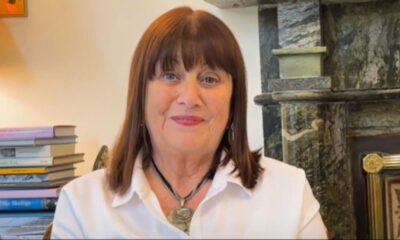Health
Embracing Low Dopamine Evenings: A New Trend for Winter Relaxation

As winter approaches, many people are seeking ways to unwind during the longer, darker nights. A trend known as “low dopamine evenings” is gaining traction, promoting a relaxing alternative to the overstimulation often associated with modern life. This concept encourages individuals to slow down and create calming environments, steering away from the bright lights and distractions that can exacerbate feelings of anxiety and restlessness.
The term “low dopamine evenings” reflects a movement towards simplicity and mindfulness. Proponents advocate for dim lighting, soft textures, and grounding activities that foster relaxation. According to lighting experts at Pooky, the focus should shift from creating bright, expansive spaces to designing intimate, cozy corners that invite relaxation.
Understanding Dopamine and Its Impact
Dopamine is often referred to as the brain’s “feel-good” chemical. It is released during pleasurable activities, including scrolling through social media or watching bright screens. However, excessive stimulation can lead to difficulties in winding down, particularly during winter months when natural light is scarce. The low dopamine evenings trend offers a remedy by encouraging individuals to minimize screen time and create a soothing atmosphere.
The appeal of this trend lies in its simplicity. Activities like reading by lamplight or enjoying a warm drink can foster a sense of calm. The practice emphasizes small, sensory experiences that allow the mind to rest and rejuvenate after a hectic day.
Popularity and Practical Tips for Low Dopamine Evenings
The low dopamine evening trend has particularly resonated with wellness and interior design creators. TikTok influencer @momentsabloom has contributed to the trend’s popularity, with a video showcasing her low dopamine evening routine garnering nearly 600,000 views. In her video, she prepares her home for a tranquil night by turning on soft lamps, lighting candles, and engaging in low-energy rituals. Commenters have praised the concept, with one remarking, “Slowing down and this lifestyle is the new luxury in life.”
For those looking to create their own low dopamine environment, Pooky offers several practical lighting tips:
1. **Minimize your space with low lamps**: Instead of striving for brightness, opt for low-level lamps that create small pools of light. This method makes spaces feel more inviting and cozy without the need for extensive renovations.
2. **Use warm lighting**: Cold white bulbs can energize a room, making them unsuitable for winding down. Switching to warm, yellow-toned bulbs or amber shades mimics the glow of a sunset, supporting natural sleep rhythms.
3. **Embrace dark corners**: Not every area needs to be illuminated. Allowing darker patches in a room reduces visual stimulation and signals to the brain that it is time to relax.
As winter nights grow longer, adopting the low dopamine evenings approach can provide a refreshing way to cope with the seasonal challenges. By prioritizing comfort and tranquility, individuals can create a soothing retreat that promotes mental well-being while navigating the demands of daily life.
-

 Top Stories3 months ago
Top Stories3 months agoTributes Surge for 9-Year-Old Leon Briody After Cancer Battle
-

 Entertainment4 months ago
Entertainment4 months agoAimee Osbourne Joins Family for Emotional Tribute to Ozzy
-

 Politics4 months ago
Politics4 months agoDanny Healy-Rae Considers Complaint After Altercation with Garda
-

 Top Stories4 months ago
Top Stories4 months agoIreland Enjoys Summer Heat as Hurricane Erin Approaches Atlantic
-

 World5 months ago
World5 months agoHawaii Commemorates 80 Years Since Hiroshima Bombing with Ceremony
-

 Top Stories3 months ago
Top Stories3 months agoNewcastle West Woman Patricia Foley Found Safe After Urgent Search
-

 Top Stories5 months ago
Top Stories5 months agoFianna Fáil TDs Urgently Consider Maire Geoghegan-Quinn for Presidency
-

 World5 months ago
World5 months agoCouple Convicted of Murdering Two-Year-Old Grandson in Wales
-

 World5 months ago
World5 months agoGaza Aid Distribution Tragedy: 20 Killed Amid Ongoing Violence
-

 World5 months ago
World5 months agoAristocrat Constance Marten and Partner Convicted of Infant Murder
-

 Top Stories4 months ago
Top Stories4 months agoClimbing Errigal: A Must-Do Summer Adventure in Donegal
-

 Top Stories4 months ago
Top Stories4 months agoHike Donegal’s Errigal Mountain NOW for Unforgettable Summer Views









